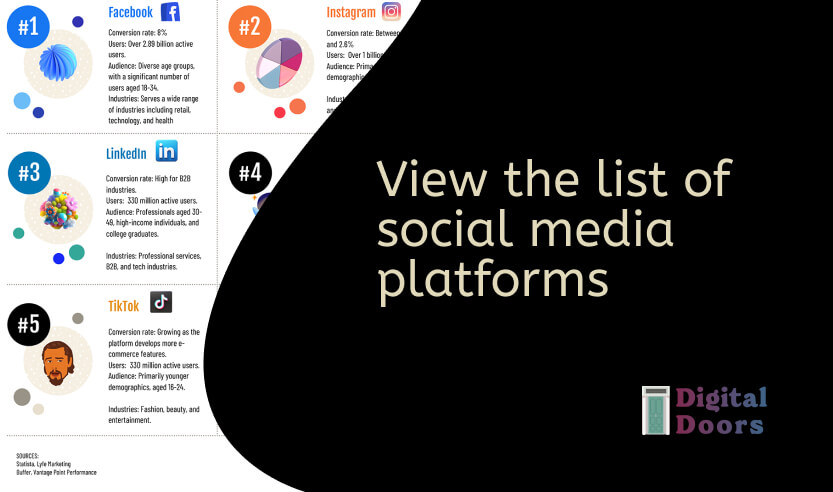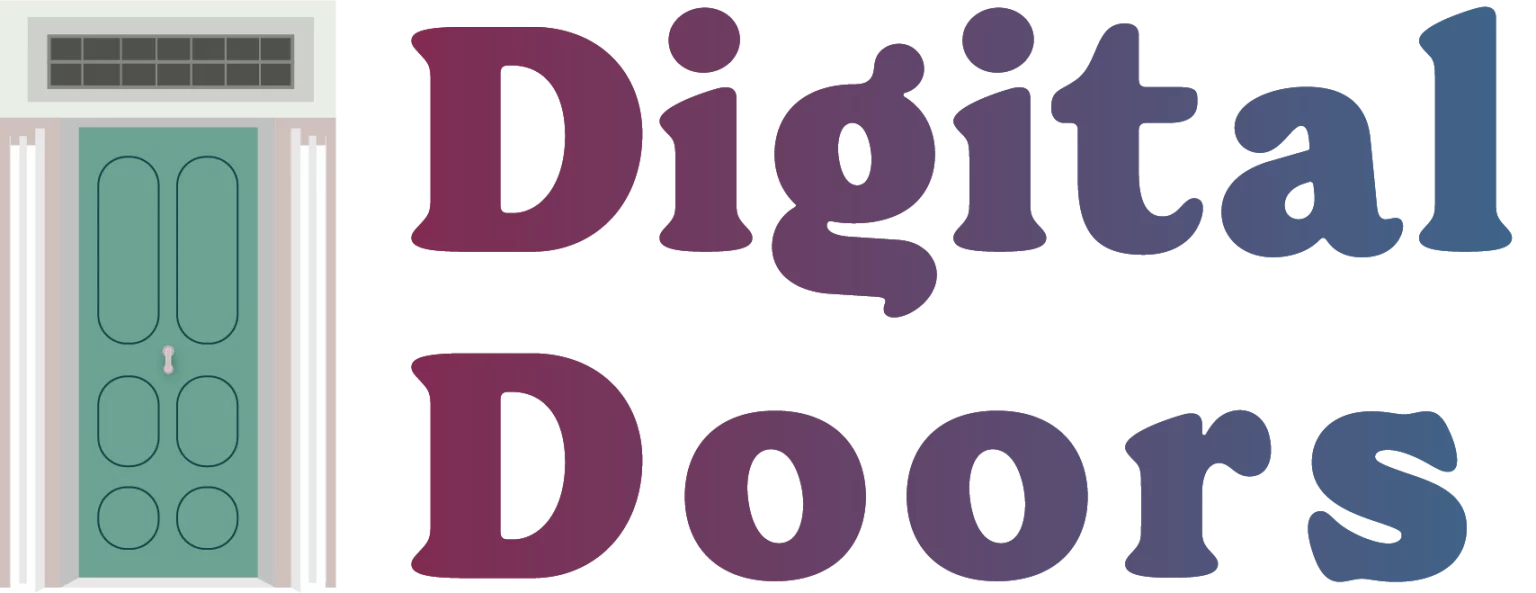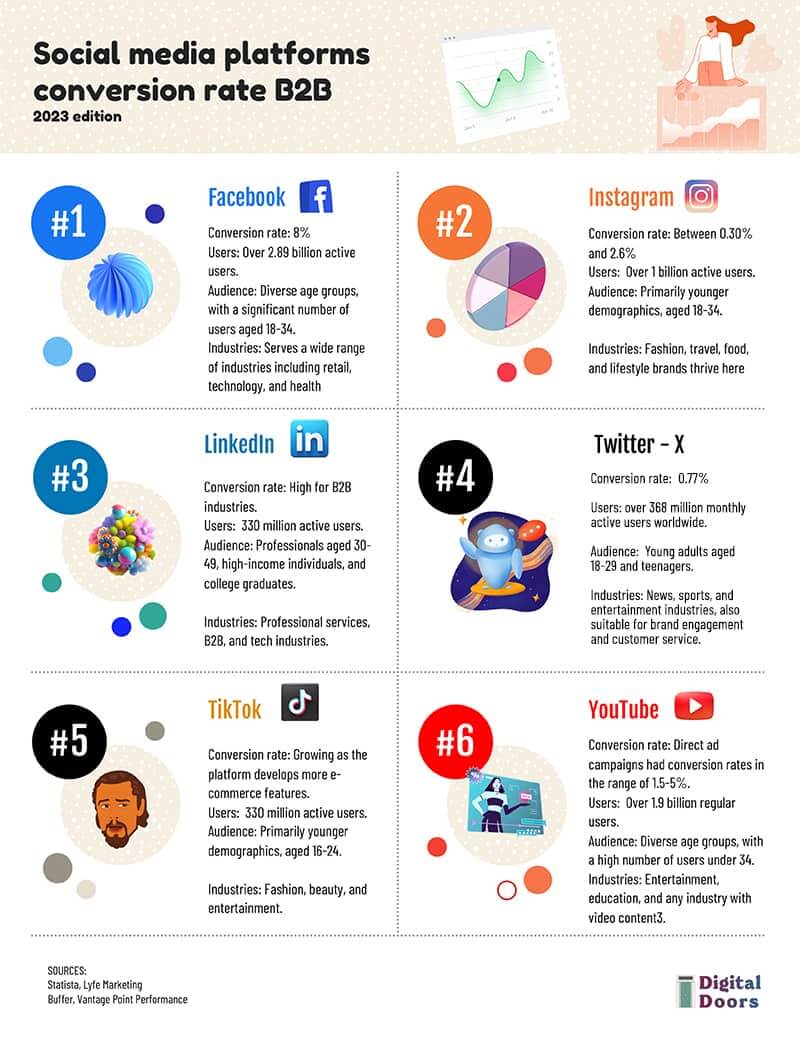In the digital era, social media platforms are the beating heart of our online interactions, offering diverse avenues for communication, connection, and community building. The “Ultimate List of Social Media Platforms Infographic” serves as a gateway to explore the expansive social media landscape.
List of social media platforms for B2B
Everyone is looking for the magic list of social media platforms when they want to launch their start-up or grow the company. But, it’s wise of us to start with the business strategy and a marketing approach for our niche. Don’t focus your team energy only on social media, and try to use offline power.
Especially when you want to test your product or service for a new audience, it’s great to create a focus and get feedback from them.
It takes more time to sign a contract with a business-to-business company. The Business to Business (B2B) sector in London is a vibrant and crucial component of the city’s economy.
London gained its glory as a global financial center and continues to be a hub of B2B services, including financial services, legal services, consultancy, and technological solutions.
Corporations are impressed by the strategic location and a big variety of skilled professionals. They promote a collaborative environment, beneficial for a start-up in its first weeks.
The B2B sector often intersects with the city’s strong financial sector, providing a multitude of services to businesses both in the UK and abroad. Moreover, London’s openness to innovation is reflected in its growing tech-based B2B services, which leverage the latest digital advancements to offer solutions in data analytics, cybersecurity, and cloud computing.
Business people are brought together in London’s heart for trade shows, networking events, knowledge exchange and smart partnerships. It’s addictive in a positive way to come and interact with lookalike people.
Platform Dominance in social media
Ask yourself this question:
This platform dominate my niche or some countries?
Statistics based on active monthly users place Meta in the top of the list of social media platforms (Facebook, Instagram), followed by Youtube. For businesses looking for the widest reach, these platforms are often first on the list. Facebook alone has billions of monthly active users.
As I mentioned before, this dominance is given by the number of users, but what if we look closer for the quality of those users and I analyse if my buyer persona really spends time there.
Business-Oriented social media Platforms:
LinkedIn is the go-to social media platform for B2B (Business-to-Business) marketing, recruitment, and professional networking. Its audience is more professional and industry-focused, making it a primary tool for B2B sales and marketing strategies.
Young people and engagement?
Instagram is all yours in terms of entertaining teenagers and keeping them online.
With its emphasis on visual content, industries related to fashion, beauty, travel, and food tend to do particularly well here.
E-commerce and Conversion: Pinterest and Instagram have increasingly become key platforms for e-commerce businesses. Pinterest users often search with the intent to purchase, and Instagram’s ‘Shop’ features have made it easier for businesses to convert interest into sales directly on the platform.
Video Content: YouTube remains the premier platform for long-form video content. It’s a vital tool for industries ranging from entertainment to education. The platform’s reach and algorithm can push videos to vast audiences if they resonate and gain traction.
Short-Form Video and Virality: TikTok took the social media world by storm with its short, catchy videos. For brands that can effectively use humor, music, or trending challenges, it offers a unique way to engage with younger audiences and go viral.
Twitter for Real-time Engagement: For real-time updates, customer service, and news dissemination, Twitter remains unparalleled. Industries like media, entertainment, and technology often utilize Twitter for announcements and real-time engagement.

Conversion rates: list of social media platforms
It’s kind of difficult to speak about conversion rates, while this is in direct relationship with your business strategy and your marketing team. But, yes, we can follow the social media marketing case studies to see the potential. It’s often suggested that businesses diversify their social media strategies, relying on multiple platforms to both raise awareness and drive sales.
Digital Doors gathered some information regarding the conversion rates for Facebook and Instagram.
The average conversion rate for Facebook varies across different sources.
In digital marketing, conversion rate (CVR) is a key metric for measuring the success of ad campaigns. It provides the percentage of visitors (or link clicks related to Facebook) that convert.
Around 8% across industries
9.21% as an overall average
6.57% as per another source
Varying rates depending on the industry, for example, Education has a rate of 13.58% and Retail has a rate of 3.26%.
Instagram:
The conversion rates on Instagram seem to range quite broadly: Between 0.30% and 2.6% depending on the reach of the brand.
An average monthly conversion rate of 19.1% according to another source.
Linkedin
High for B2B industries.
Conversion rate: High for B2B industries.
Users: 330 million active users.
Audience: Professionals aged 30-49, high-income individuals, and college graduates.
Industries: Professional services, B2B, and tech industries.
TikTok:
In 2023, the average conversion rate for TikTok ads was around 3%.
As of 2022, TikTok was still a newer player in the advertising space. Initial reports suggested conversion rates were a bit lower than established platforms, but the potential for virality could compensate for that. Brands using influencer partnerships often saw higher engagement and conversion.
YouTube:
The conversion rates for YouTube ads varied across different sources.
Conversion rates on YouTube can vary greatly based on the type of content and the call-to-action used. Direct ad campaigns had conversion rates in the range of 1.5-5%. However, content that is organically discovered and resonates well with audiences (like a popular tutorial or review) might see higher conversion rates.
Google (Ads):
Conversion rates for Google Ads differ by industry. For instance, the legal industry had an average conversion rate of 6.98%, while the education industry had a conversion rate of 4.13% in Q2 2021. Conversion rates on the Search Network have been reported around 3.5%, but this varies significantly by industry. For example, the finance and insurance sectors often see higher conversion rates in social media marketing.
Pinterest:
There was information indicating that on average, Pinterest ads cost $0.00 – $2.00 per conversion.
List of social media platforms – Demographic Specificity
As we move from one platform to another, we encounter different demographic groups. For example, Snapchat and TikTok have a younger user base, while Facebook’s demographic has been aging, with a stronger presence of users in the 30s and 40s. Knowing the demographic specifics can help businesses tailor their strategies effectively, when starting from the list of social media platforms.
Localised Platforms
In London we can see many billboards promoting Facebook or Instagram. This might be a sign that the adoption rate is low?
Also, we should pay attention to the fact that in some regions or countries, local platforms dominate. For example, in China, platforms like WeChat and Weibo are more prominent than global giants like Facebook or Twitter. It’s crucial for businesses targeting international audiences to be aware of and adapt to these regional favourites.

